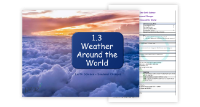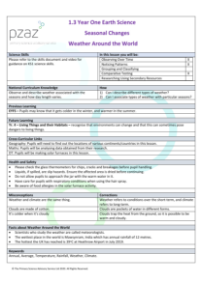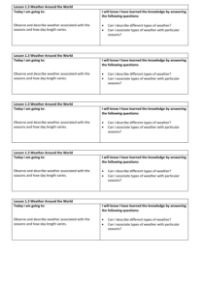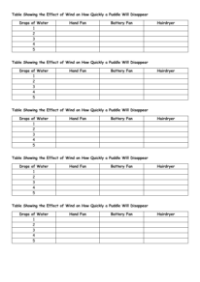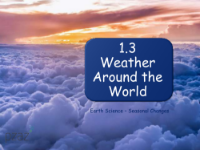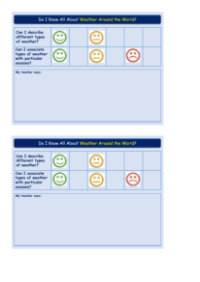Weather Around the World - Teacher Explanation

Science Resource Description
Welcome to lesson 1.3 for Year 1 on seasonal changes, focusing on weather around the world. This lesson aligns with the national curriculum, requiring pupils to observe and describe weather patterns associated with different seasons and the variation in day length. Health and safety are paramount; therefore, ensure that the glass thermometers used are free from chips, cracks, or breakages. Additionally, pupils will handle liquids, so any spills should be immediately cleaned to prevent slipping. Only the teacher will handle hot water, which will be used in a jar, and pupils should be kept at a safe distance. Hairspray is also used, so take precautions for children with respiratory conditions. Be mindful of those with food allergies, as some activities may affect them. This lesson has cross-curricular links with geography, maths, and art and design technology (ADT), where pupils will create a solar furnace.
The lesson includes a fascinating experiment on cloud formation, requiring freshly boiled water, ice in sealable bags, hairspray, and jars. Pupils will observe how water vapour and hairspray interact to form clouds when warm and cold air layers meet. Following this, the lesson moves on to simulating rain using cotton wool, a large plastic cup, blue food colouring, a board pin, sticky tape, and water. Pupils will explore the concept of rain and why it occurs when clouds become too heavy to retain moisture. A research task will have pupils investigate weather patterns across the UK, focusing on rainfall and sunlight exposure. Another activity will demonstrate evaporation, showing why puddles disappear after rainfall, using paper, a stopwatch, a dropper or syringe, tissue, water, a hairdryer, and battery fans. Lastly, pupils will construct a solar furnace to cook food using sunlight, involving marshmallows, chocolate, biscuits, cling film, foil, scissors, tape, a strip or glass thermometer, and a pizza box. The lesson concludes with making a tornado model using a cyclone connector and two 2-litre bottles filled with water, allowing pupils to see the dynamic motion of a tornado. This comprehensive lesson is designed to be engaging and educational, offering a hands-on approach to understanding weather phenomena.

